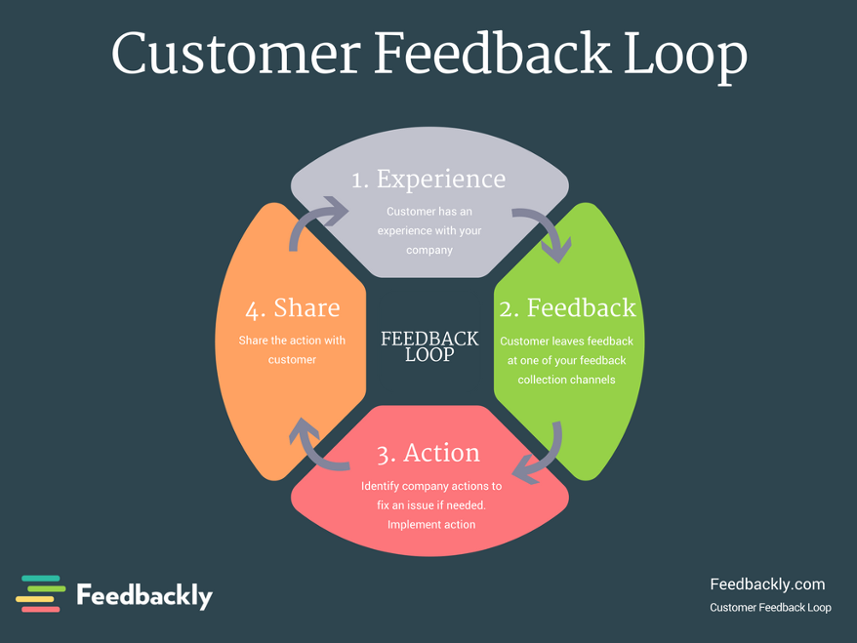One of the hardest things to obtain from the company’s perspective is useful customer feedback. Yet, customers are often only too eager to provide you with their experiences because they want their opinions to be heard. This eagerness is often sparked by either a positive or negative experience with your company. At the bare minimum, these customers should have an outlet to express these thoughts and opinions, however an optimized customer feedback strategy will have a system which facilitates a dialogue with customers. This is the framework for a customer feedback loop, where the goal is to turn your customer feedback into actions and communicate those results back to your customers.
Develop a feedback collection process
How often do you actively seek out the suggestions and feedback from your customers? When polled, most companies say that they constantly talk to their customers and get feedback. However, when polling those companies’ customers, the results are different. If you are relying on your customers to initiate the feedback process, you will be missing out on those customers which are not interested in proactive engagement. Implementing an automated feedback request process will enable you to learn about your shortcomings, learn about your customer’s needs, and also improve customer retention. Although these techniques are not truly secrets, so few companies proactively ask their customers for feedback that there is an astonishing gap in resources available for feedback loop building.
Talk with your customers – not at them
Collecting and applying your customer feedback is important but what is customer feedback loop? A customer feedback loop is simply a system for collecting feedback about your product or service. Without feedback from your customers, you simply aren’t seeing your business from all angles, and as a result you are missing out on tremendous opportunities to improve your business and your bottom line. A customer feedback loop is created when you not only have a process for collecting feedback, but also have created a system for turning that feedback into business actions. The feedback loop is closed when you implement a system for communicating those actions back to your customers. This creates a dialogue with your customers and shows them that your business is not superficial about it’s feedback requests. See the diagram below for a basic customer feedback loop visualization.

Implementing a customer feedback loop requires marginally more effort than a simple one way feedback collection process, but there is no doubt that the benefits are wide-ranging. It’s the most simple way to kill 2 birds with one stone. Not only will you get crucial insight about your operations from the customer’s perspective, you will also build a system for improved customer communication when changes are made. This will position your brand as a leader in customer service.
A human touch goes a long way
Customers are typically motivated to give companies feedback with the hope that their opinions will be valued, make a difference in their near-future experiences, or spare others any grief they’ve endured. Any time that a customer shares feedback (whether solicited via survey or unsolicited via complaint or casual comments to front-line employees) it’s important to acknowledge the customer’s view and thank them. Nowadays any human response to a feedback or complaint form will go appreciated. Use this to your advantage by spending a little more effort on a bulletproof customer feedback loop!
There are dozens of feedback collection tools on the market including Feedbackly, which was founded in 2012. It is the only tool that gives you a comprehensive feedback analytics dashboard to help you turn your feedback into actions. With a built in marketing database, you can communicate directly with those customers which have given you feedback, so it is the perfect tool to build your Feedback loop with.
[maxbutton id=”1″ url=”https://www.feedbackly.com/” text=”Learn more” ]



